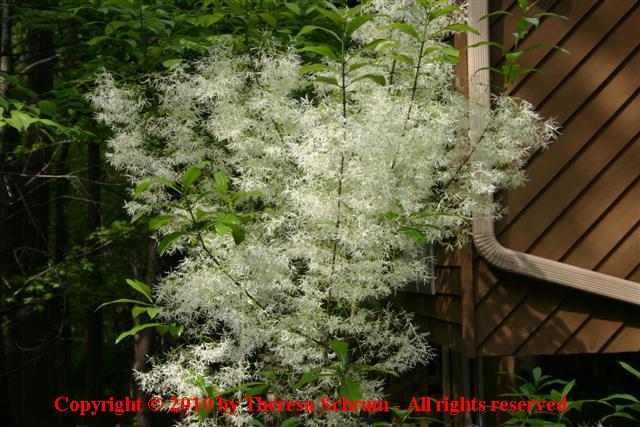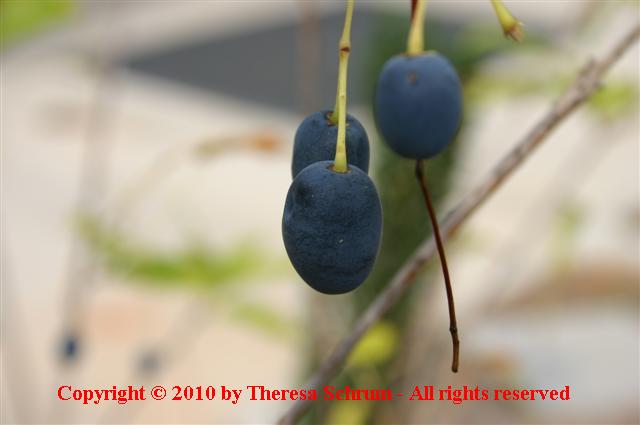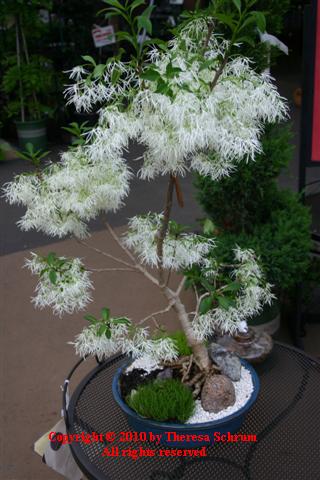

| Fringe Tree |
| Chionanthus spp. |
 |
 |
| Chinese Fringe Tree | Native Fringe Tree |
| Species Native Range: Eastern U.S. & China |
| Hardiness: USDA Zones (4)5-9 |
| Mature Size: 12-20 feet tall & 10-15 feet wide |
| Exposure: Full sun to light shade |
| Soil: Rich, moist but well-drained |
| Drought Tolerance: Excellent |
| Ease of Culture: Easy |
 |
 |
| Native Fringe Tree Fruit | Fringe Tree Bonsai |